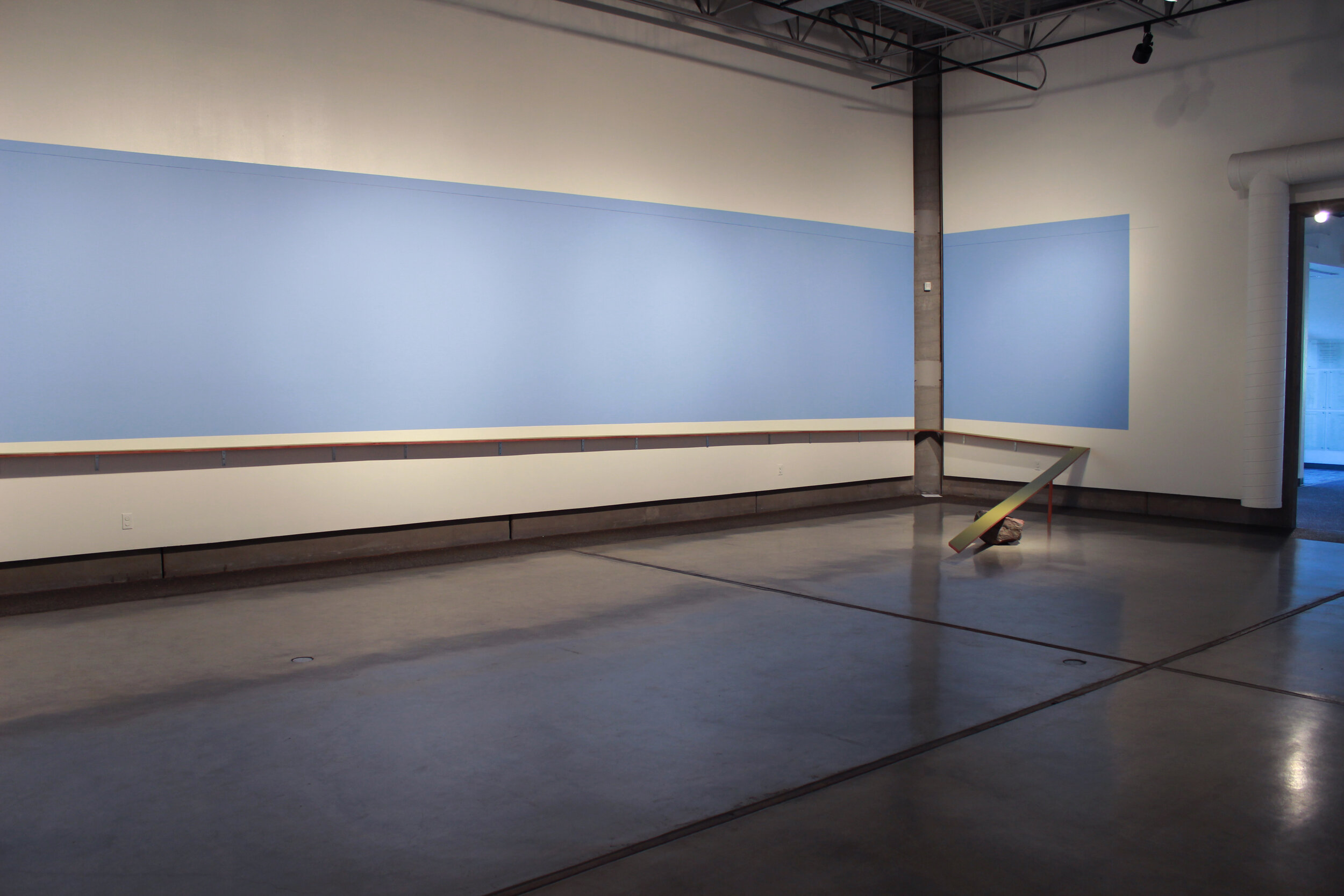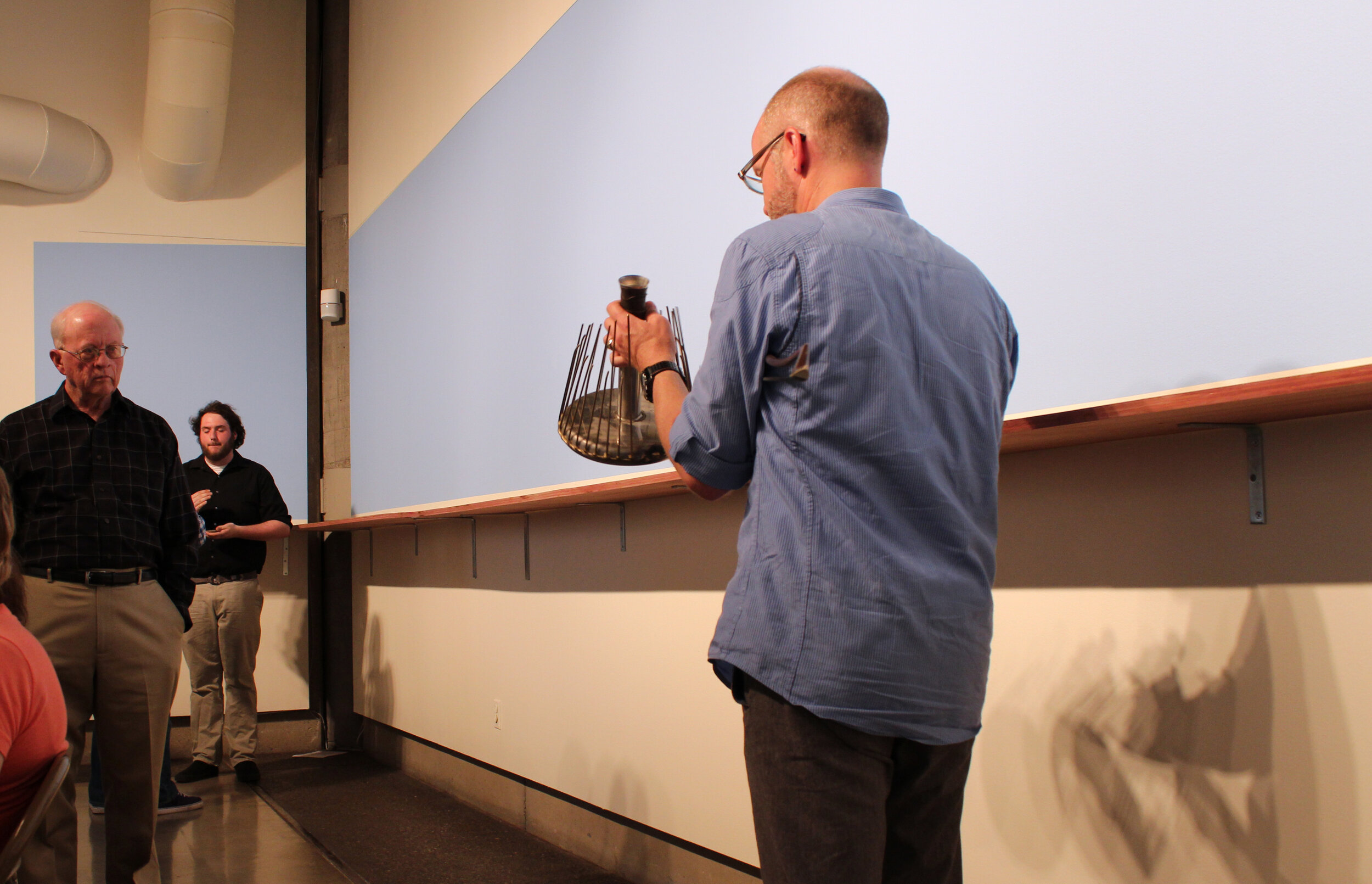Flood. Control
Latex, color pencil, wood, rock and archival digital prints (22”x17” each), 17.5’x37’x37’, 2014
Schneider Museum of Art Ashland, OR.
In Flood. Control Avantika Bawa uses the history and geography behind the formation of Emigrant Lake as the conceptual underpinning of her installation.
Emigrant Lake is a reservoir that was created in 1924 to irrigate the land for the new settlers and was expanded in 1960. In the process of expansion, the old town of Klamath Junction, as well as parts of the Old Siskiyou Highway, were flooded and submerged.
The contrast between the sublime beauty of Emigrant Lake’s expanse, its controversial history, and its location at the boundary of the natural and the fabricated are poetically explored in this installation. Through a careful selection and placement of visual elements, Bawa presents the gallery as a ‘stage’, acknowledging the influence of the theater arts in Ashland, OR. A series of prints installed at the entrance of the Museum mimics posters of a play one might be about to view, the ‘play’ here being the installation.
Flood. Control is comprised of a large, painted, panoramic blue swathe that spans the four walls of this space and a green shelving structure that appears to be supporting the shape. The shelf traverses the walls and ends on the floor, where it rests on a rock. This abrupt ending of the shelf alludes to the highway that was ‘lost’ in the process of flooding. The singular rock, borrowed from the actual site of the lake, serves as a visual anchor in the gallery space. Collectively, these components dodge the rules of linear perspective and distort our understanding of scale, proportion and the ‘leveled’. The only truly level element in the piece is the ‘thin blue line’ on the top of the swathe. This line evokes both the residual high water marks of a flooded interior, and a deliberate chalk mark by a construction worker.
The show created a platform for several performances artists and musicians who created works in response to the installations. These included:
- Vocalist Christine Williams who preformed ‘Sounding the Gallery’
- Terry Longshore and friends who created an experimental sound works
- A dance piece by Southern Oregon University’s performance class choreographed by Ellie Leonhardt
Prints
Silk screen and digital print on paper, unique prints (edition of 1), 23.5"x29.5" each
2014














